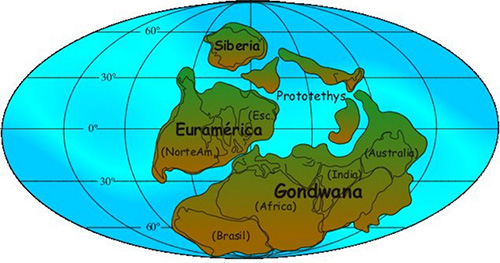Formation of Pangaea
Pangaea formed through a gradual process spanning a few hundred million years.
Beginning about 480 million years ago, a continent called Laurentia, which includes parts of North America, merged with several other micro-continents to form Euramerica. Euramerica eventually collided with Gondwanaland (Gondwana), another supercontinent that included Africa, Australia, South America and the Indian subcontinent.
About 200 million years ago during the Early Jurassic Period (201 million to 174 million years ago) , the supercontinent began to break up. Gondwanaland (what is now Africa, South America, Antarctica, India and Australia) first split from Laurasia (Eurasia and North America).
Then about 150 million years ago, Gondwanaland broke up. India peeled off from Antarctica, and Africa and South America rifted, according to a 1970 article in the Journal of Geophysical Research. Around 60 million years ago, North America split off from Eurasia.
